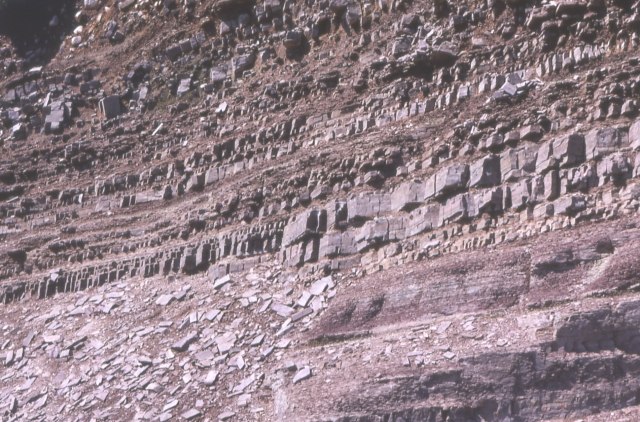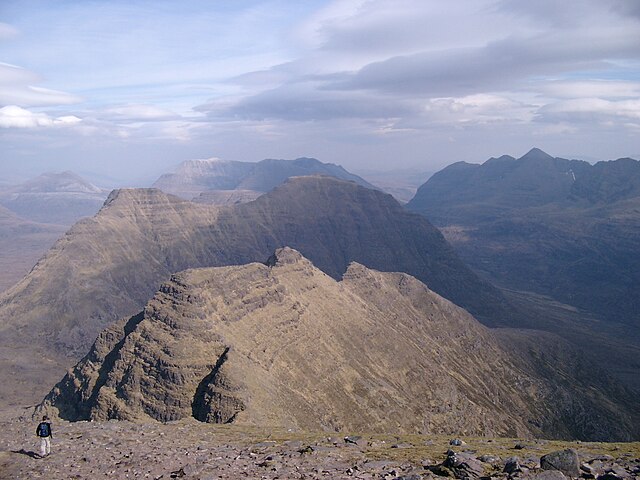In geology, the term Torridonian is the informal name for the Torridonian Group, a series of Mesoproterozoic to Neoproterozoic arenaceous and argillaceous sedimentary rocks, which occur extensively in the Northwest Highlands of Scotland. The strata of the Torridonian Group are particularly well exposed in the district of upper Loch Torridon, a circumstance which suggested the name Torridon Sandstone, first applied to these rocks by James Nicol. Stratigraphically, they lie unconformably on gneisses of the Lewisian complex and their outcrop extent is restricted to the Hebridean Terrane.
Layers of Torridonian sandstone exposed near Diabaig
Slioch formed of Torridon Group sandstones lying on an irregular unconformity over Lewisian gneiss, seen in the middle and foreground around Loch Maree
Thick-bedded sandstones of the Stoer Group exposed on the Old Man of Stoer
Horizontally bedded sandstones of the Torridon Group, forming the Horns of Beinn Alligin
The Northwest Highlands are located in the northern third of Scotland that is separated from the Grampian Mountains by the Great Glen. The region comprises Wester Ross, Assynt, Sutherland and part of Caithness. The Caledonian Canal, which extends from Loch Linnhe in the south-west, via Loch Ness to the Moray Firth in the north-east splits this area from the rest of the country. The city of Inverness and the town of Fort William serve as gateways to the region from the south.
Liathach seen from Beinn Eighe. With the Munro "Top" of Stuc a' Choire Dhuibh Bhig (915 metres) in the foreground and the two Munro summits in the background.
View east from Sgurr Mhòr over the "Horns" of Beinn Alligin





